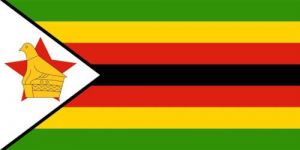Language/Shona/Vocabulary/Telling-Time
Learning how to tell time in Shona is an essential skill for anyone looking to communicate effectively in the language. Shona, the most widely spoken Bantu language, uses a similar time-telling system as English. However, learning the basics of the Shona time-telling system is still necessary for communication, and it's also a great way to learn about the Shona culture. In this lesson, you will learn how to tell time in Shona, including hours and minutes.
Telling Time in Shona
In Shona, like in English, there are two types of clocks used: digital and analog. The analog clock is commonly used in most parts of the world, but the digital clock is more precise and more common in the modern world. In Shona, both types of clocks use the same time-telling system as English, which is the 12-hour system. The majority of Shona speakers, however, do not write out military or 24-hour time.
Hours
The Shona language uses numbers to tell time in hours. The hours from 1 AM to 12 PM are the same as those in English.
| Shona | Pronunciation | English Translation |
|---|---|---|
| saa yedu | s-ah ya-doo | our time/our hour (12.00AM) |
| sei | say | one o'clock |
| mbiri | m-bee-ree | two o'clock |
| tatu | ta-too | three o'clock |
| ina | ee-na | four o'clock |
| shanu | sha-noo | five o'clock |
| nemunye | nay-moo-nye | six o'clock |
| neshanu | nay-sha-noo | seven o'clock |
| nzvimbo | nzveem-bo | eight o'clock |
| chitungwiza | chee-too-ng-wee-za | nine o'clock |
| gumi nharo | goo-mee nyar-oh | ten o'clock |
| gumi na sei | goo-mee na say | eleven o'clock |
| saa yemweya | s-ah ye-mway-ya | noon (12.00PM) |
| saa yemvanhu | s-ah ye-mvan-oo | our time/our hour (1.00PM onwards) |
Minutes
Minutes are usually not pronounced in numbers; "past" and "to" are used instead.
- "Past" is translated as "sina", which means "without". For instance, if it is 3:10 in Shona, it is pronounced as "Saa yedu sina mbiri".
- "To" is translated as "se", which can be compared to the English word "until". For instance, if it is 3:50 in Shona, it is pronounced as "Saa yedu se dambudziko".
It's important to note here that the word "sina" is frequently omitted.
Examples
Here are a few examples of how to tell time in Shona:
- 5:45 is "Saa yemunye se maviri nechidzokeri"
- 10:30 is "Gumi nharo se tatu"
- 12:15 is "Saa yemweya sina mbiri nechiromo chine"
- 1:50 is "Saa yemvanhu se shanu nezvimwe"
- 9:20 is "Chitungwiza se mbiri"
- 2:02 is "Sei sina munyana ne hapana"
Conclusion
Learning how to tell time in Shona is a crucial skill for anyone who wishes to communicate in Shona. It enables efficient communication and provides an insight into a culture that is deeply rooted in its traditions. By learning the basics of Shona time-telling, you can expand your knowledge of the language and potentially use it to impress Shona speakers you meet.

